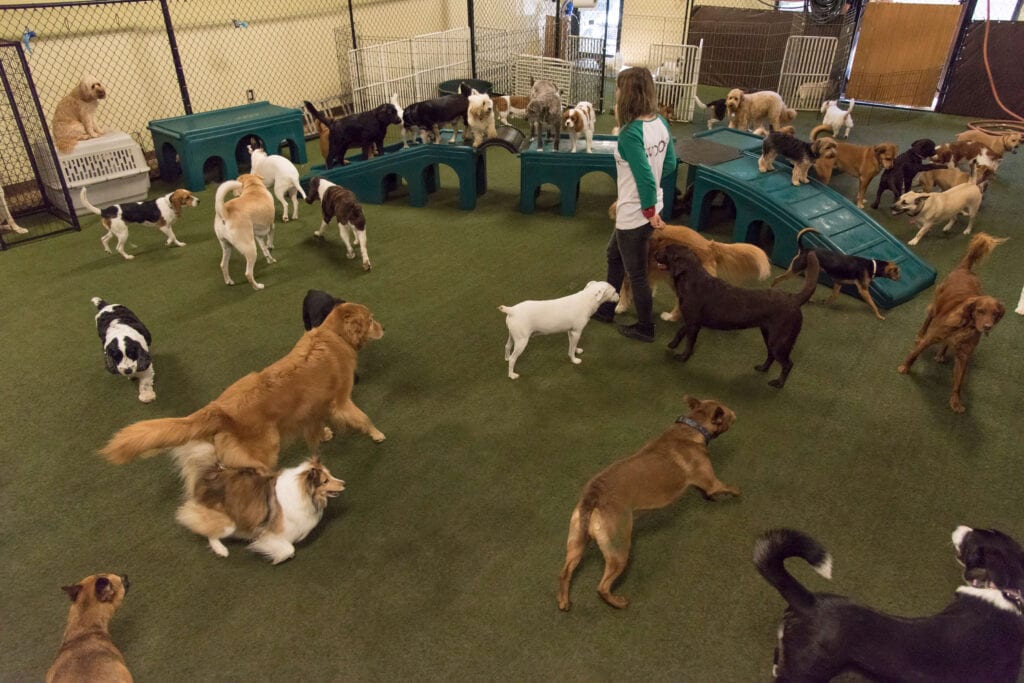Cancer is the leading cause of non-accidental death in dogs. It didn’t use to be that way, but with all of the toxins our dogs are exposed to, it’s no wonder. Nearly 50% of pets over the age of 10 will develop some type of cancer, with lymphoma being one of the most common.
Lymphoma is a cancer of a type of white blood cell called a lymphocyte. They are found in lymph nodes in the blood and tissues of the body. Their role is to produce antibodies that fight infection and disease.
Many studies have linked exposure to lawn chemicals to cancer and other health issues. This includes weed killer, fertilizer and insect growth inhibitors.
A study presented in the Journal of Environmental Research in 2012 concluded that exposure to lawn chemicals was associated with a 70% higher risk of canine malignant lymphoma.
Products to avoid include:
Bifenthrin – A key ingredient in grub and insect control products. It is listed as a possible carcinogen by the U.S. Environmental Protection Agency.
2,4-dichlorophenoxy acetic acid (2,4-D) – A 1991 study published in the Journal of the National Cancer Institute, reported that dogs exposed to an herbicide containing 2,4-D (one of two active ingredients in Agent Orange) are twice as likely to develop lymphatic cancer. It stated that even just one application a year increased a dog’s cancer risk by one-third. At the time of the study one in seven dogs developed lymphoma, today that number has increased significantly.
Glyphosate – A non-selective herbicide which kills all plants by taking away its nutrients and weakening its immune system. It is linked to kidney disease, cancer, and birth defects. HRI Labs conducted a study to determine the levels of glyphosate, the weed killer used in Round Up, in both humans and in pets. It found that dogs are likely to have levels of glyphosate 5,000 times higher than humans. The product is so widely used that it is showing up in our air and water.
Atrazine (1,2) This is a broadleaf weed control product. It was banned in the EU in 2004, but is one of the most widely used herbicides in the U.S. Studies link it to being an endocrine disruptor.
Carbaryl Sold under the brand name Sevin. It kills mosquitoes and honeybees (which let us not forget, we desperately need in our environment and whose population is diminishing nationwide). This product is illegal to use in the UK, Germany and Sweden.
According to BeyondPesticides.org, “of 30 commonly used lawn pesticides, 19 have studies pointing towards carcinogens, 13 are linked with birth defects, 21 with reproductive effects, 15 with neurotoxicity, 26 with liver or kidney damage, 27 are sensitizers and/or irritants and 11 have the potential to disrupt the endocrine (hormonal) system
Studies have also found that lawn chemicals are tracked indoors by shoes that walked across treated areas. The chemicals have also shown to travel up to 50 feet if there is wind at the time of application. Which means your neighbor’s lawn chemicals could end up in your yard and in your house.
The label may say to stay off the area until it is dries, but when is it really safe to be on the lawn after chemicals have been applied? Most weed killers evaporate in 24-78 hours, but there is still residue that can remain. Some studies show that residue can remain in the soil for a year. Which is scary when you think of crops being grown and the food we eat.
We can’t live in a bubble or force our pets to put booties on every time they go outside. But we can control exposure and reduce risk by doing a few simple things.
-
- Don’t apply chemical herbicides, insecticides or fertilizers in your yard. Let’s get back to the time when people didn’t have to have golf course perfect grass. A dandelion or 100 are okay. You are providing food for the bees that are having such a hard time finding nectar.
- Give your dog a paw wash every time you come in from a walk.
- Don’t wear shoes inside your home.
- Buy organic vegetables whenever possible.
- Feed a balanced, species appropriate diet.
- Call your local parks department and encourage them to place flags on the lawn to let people know when chemicals have been applied so you can avoid allowing your dog on the grass when product has been applied.
- If you live in an HOA where there are common areas that are treated by a commercial lawn care company, speak up and ask them to ideally not use chemical, but at minimum, let residents know when chemicals have been applied by placing flags up as a notification.
It can be overwhelming when you think about how many toxins we are exposed to, but you can control your environment and taking a few small steps can make a big difference in your pet’s risk of cancer.






